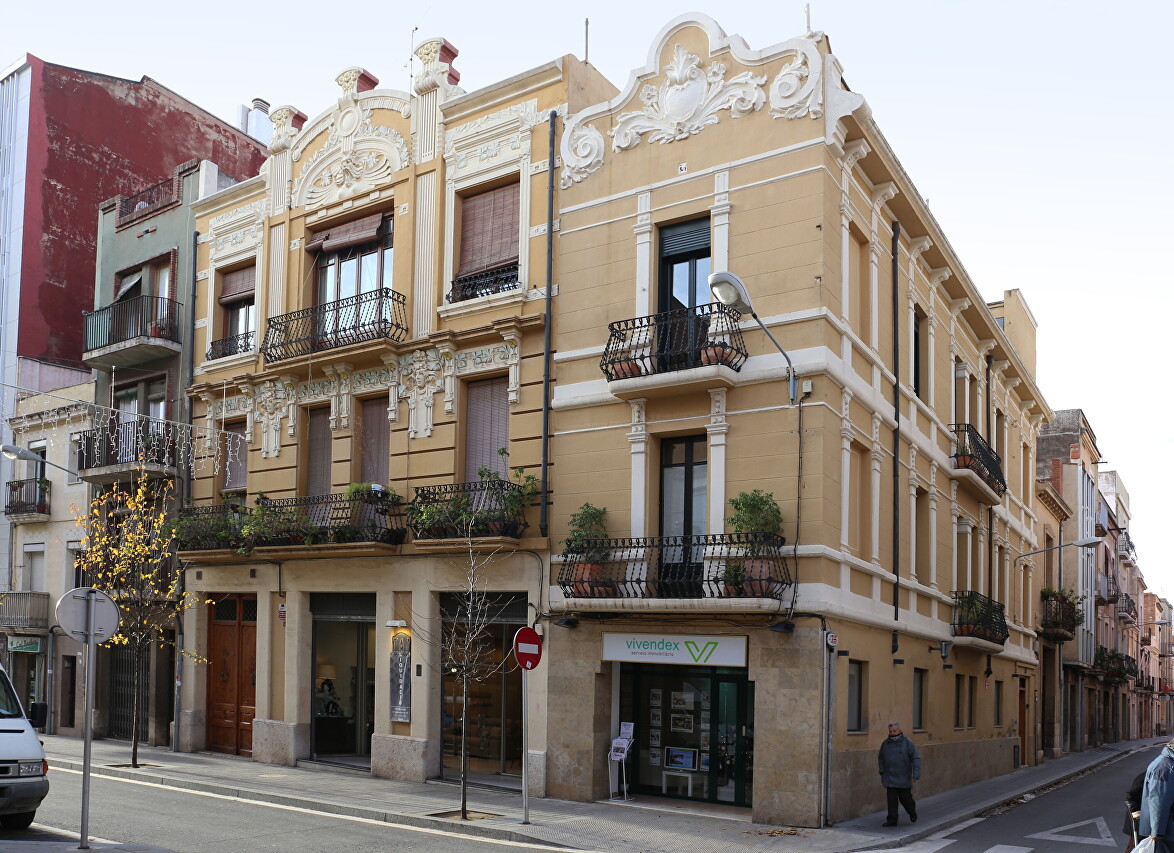Plaça Llibertat and Carrer Ample, Reus
The Carrer de Llovera ends in a small triangular square named after the painter Marino Fortuny y Marsal (1838-1874). Fortuny was born in Reus to a poor family and was left in the care of his grandfather after the death of his parents. The grandfather was a carpenter, but he had a penchant for cultural creativity, created a collection of wax figures and traveled with it around the country. Mariano helped his grandfather paint the figures. In 1852, they showed their collection in Barcelona, where they attracted the attention of famous people, as a result, Mariano received a scholarship to study. at the Higher School of Fine Arts. He then continued his education in Rome. Fortuny was known in Catalonia and Andalusia, and worked in Paris. Then he ended up in Morocco, where he became a recognized leader of the so-called Orientalism (Oriental style). His most famous creation, the giant canvas "The Battle of Tetuan" is located in the Museum of Modern Art in Barcelona. In the center of the square in 1939, the city authorities erected a monument to the artist, Fortuny depicted as a character in one of his paintings, El Condesito. Facing the square is the monumental main facade of the Caixa de Pensions, built in Noucentisme style in 1932 by architect Enric Sagnier i Villavecchia.

To the right, the vast expanses of Freedom Square (Plaça Llibertat) open up. The square is surrounded by modern buildings, the largest of which houses the Museu d'art i Historia (Reus Museum of Art and History). The building, built in the style of academic monumentalism in 1962, consists of a central twelve-story building and two eight-story wings.

On the square, in a glass gallery, Christmas Nativity scenes are displayed.

From Plaça Llibertat, I went to Carrer Ample, where I saw a house at number 18 decorated with artificial stone and plant ornaments-sgraffito.

After walking a couple more blocks, I found myself in one of the oldest squares in Reus, Plaza del Victor. It is surrounded by modern buildings, but in the center is preserved the Fountain of Neptune (Font de Neptú) in the Baroque style, built in the 17th century.

A little further away is the Casa Ramon Vendrell mansion, built in 1912 according to the project of the already well-known Pere Caselles. The house belongs to the era of mature Art Nouveau, so of all the author's early experiments with color and forms, we see only plant bas-reliefs and figured balcony grilles. Otherwise, the building looks strict and elegant.

My walk is nearing its end, I return to the market (Mercat central), where I started my route early in the morning. To the right of the market is the Church of Saint John (Església de Sant Joan), the design of which is often attributed to Pere Caselles, but the architect Pau Bartoli is listed in the books of the construction contractor. The parish was established in 1878, a plot of land was allocated in 1909,construction began three years later, and the consecration took place on June 24, 1932. During the Civil War in 1936, the church was attacked by left-wing Republicans and looted. Restoration began in 1940, but lasted more than 40 years.

Opposite the church on the wall of the house you can see the image of a man tied with belts in the sgraffito technique. This creation probably has something to do with the Institute of Psychiatry located in Reus.
